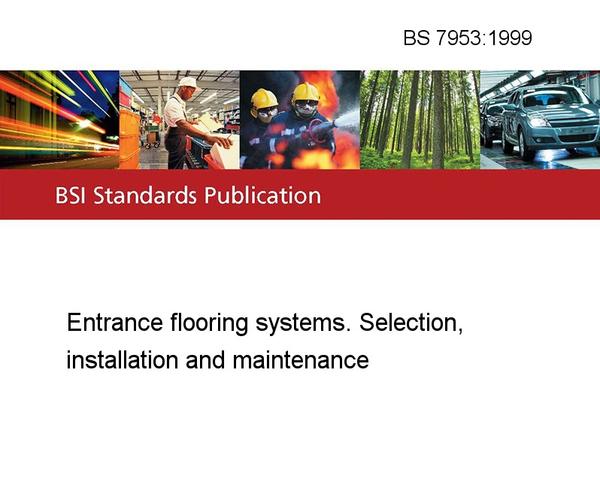Entrance Matting British Standards UK

A GEGGUS GUIDE TO ENTRANCE MATING AND BRITISH STANDARDS
Entrance matting systems are often overlooked when it comes to designing buildings, yet it is the designers responsibility to ensure that entrance areas are safe for visitors and adher to UK Building Regulations. GEGGUS aluminium entrance matting systems comply with the British flooring standards by drastically reducing dirt and moisture ingress in public and commerical entrance areas, prolonging the lifespan of surrounding floor finishes, minimising maintenance costs and slip and trip injuries.
So, what are the regulations?
BRITISH STANDARD 7953 (1999) - This code of practice outlines the requirments of entrance matting for the removal and retention of dirt and mositure, thereby reducing the risk of slip and trip injuries and prolonging the lifespan of the surrounding floor finishes. It also describes the need for ease of cleaning, maintenance and lifespan, to ensure consistent performance over time which is crucial in high-traffic areas..
BRITISH STANDARD 8300 (2018) - Re-emphasises the need to reduce dirt and moisture ingress and to implement effective drainage. But also addresses the specific needs in regards to disability access, highlights the necessity for entrances areas to be safe and accessible for all. It highlights that there should be a flush, step-free, and slip-resistant access for wheelchair users and the visually impaired.
A mat length of at least 2.1metres in the direction of traffic is important, to allow for a full wheelchair wheel rotation. This highlights the importance of DDA compliance in ensuring the safety of wheelchair users.
2010 BUILDING REGULATIONS - Place further imporance on the requirment for disability access. Building must be accessible to all, both foot and wheeled traffic and it is important that the entrance matting’s insert material effectively removes moisture from wheelchairs and must not impede wheel movement when adjoining to surrounding floor surfaces. Entrance matting should be recessed to comply with this, to avoid trip hazards and to facilitate ease of movement.
HEELPRROF REQUIRMENT - Though not legislation, European standards such as DIN 18650 recommend a maximum gap of 4-5mm between floor surfaces (specifically the spacing between aluminium profile in the case of entrance matting) to prevent trips from those wearing stiletto heels.
Additional industry standards:
- Mat Length: For optimal removal of dirt and moisture, where possible we advise specifing an entrance matting system that allows for two full wheelchair wheel rotations, which equates to approximately 4.2 meters in the direction of travel.
- Material Selection: Avoid using coir matting in non-domestic settings. Due to poor durability in heavy footfall environments and limited slip resistance they tend to hinder wheelchair accessibility, so are unsuitable for commercial applications.
- Simarly, throw down (loose/surface lay) mats shouldn't be used as a primary entrance matting system in commercial buildings. Instead surface lay mats are recommended as a secondary matting system (zone 3 /4) after a primary aluminium profile entrance mat.
- Drainage: For external or unovered entranc area, implement an effective drainage tray/drainable matwell for the removal of excess mositure, preventing pooling and additional slip risks..